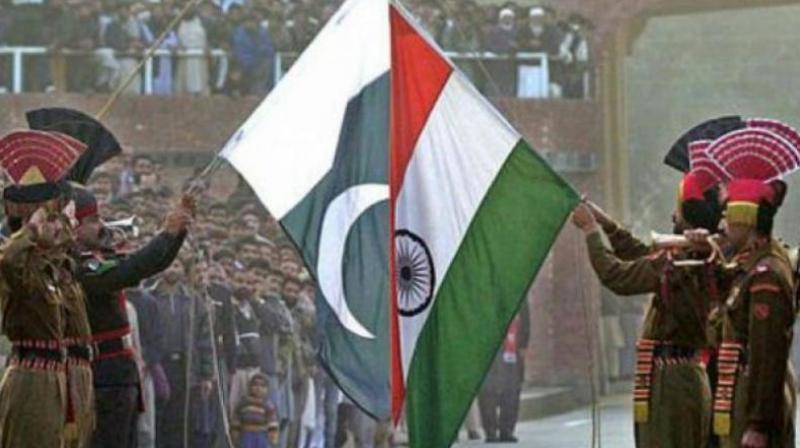Time for strategy shift: Hit Pak where it hurts
Can India devise and invoke a Chanakya doctrine of secret and undeclared wars' against a treacherous enemy?

The three kinds of war are open war, secret war and undeclared war
— Chanakya, in his Arthashastra
India is in a state of external and internal siege. No other phrase can adequately describe the vitriolic, bitterly divisive clash of civilisations being played out across the entire country at present. Political violence is rising on an unprecedented scale. Internecine skirmishes between well-armed private militias of various political factions are endangering society and have placed the country’s police and security forces under a severe strain. In the absence of any punishing response for its transgressions, Pakistan continues with an unchanged Kashmir policy of a “thousand-year jihad” against India. At the centrestage, in mortal combat at all levels of governance, is a conservative right-wing government and a disparate Opposition attempting to rally around the rump of a (once) grand old party, which largely remains a family fief even though several changes of guard have taken place within the organisation. In Uttar Pradesh, communal tensions and riots sparked by a long-running dispute over the ownership of the dilapidated and destroyed Babri Masjid at Ayodhya, said to have been built by a commander in Mughal emperor Babar’s army over the ruins of a destroyed Hindu temple, have nudged awake slumbering demons from the past, which the Supreme Court is now attempting to exorcise by the due process of law, encouraging mutual accommodation and consent between the saner elements in both communities. But its efforts have hit a wall of mulish obduracy from obtuse religious fanatics and hardliners on both sides of an emerging communal divide that does not augur well for the future. The divide has to be bridged, and the earlier it is the better.
In Maharashtra, caste tensions between dalits of the Mahar community and upper caste Marathas have been reignited by political activists on both sides around the battle of Koregaon Bhima (fought on New Year’s Day in 1818) during the Third Maratha War, where the forces of the British East India Company, based on a small detachment of 800 men of the Second Battalion of First Bombay Native Infantry, largely of the Mahar class, led by British officer Capt. Staunton held their own against a much larger Maratha army of 28,000 men under Peshwa Baji Rao II. The “Defence of Corygaum”, was a prominent battle honour emblazoned on the regimental colours of the Regiment of Grenadiers of the Indian Army, which claims descent from the old Bombay Native Infantry. The site of the Battle of Koregaon had been marked by the British with an engraved stone obelisk on the banks of the River Bhima at Sirur, near Pune, as a memorial to a British victory against an Indian power. The Koregaon monument was a quiet, shady roadside spot, a little away from the sustained roar of heavy traffic thundering along the Pune-Ahmednagar road. But the cross-currents and compulsions of post-Independence caste politics have recast the narrative of Koregaon as a victory of the dalit Mahars against their higher caste oppressors, the Marathas. Militant dalit political organisers in the ostentatious yellow robes of the Buddha have converted the Koregaon memorial into a monument to Babasaheb Bhim Rao Ambedkar and the victory of Mahar soldiers of the Bombay Native Infantry over their caste enemies, the Marathas. The irony could not be greater — a downtrodden indigenous community was so harassed and oppressed by the higher castes of its own society that military service with a foreign power was a perfectly agreeable option if it allowed an opportunity to hit back at the oppressor. The obelisk, which is officially a historical monument preserved by the Archaeological Survey of India, has now been de facto appropriated by dalit political activists. They have transformed the erstwhile quiet shady spot into an almost quasi-religious place of worship bedecked in garlands, daubed vermilion and sandalwood and the votaries of Babasaheb Ambedkar come here in busloads, shepherded by young activists from dalit organisations. Ironically, both these communities are heavily recruited into the Indian Army where they constitute the Mahar Regiment and the Maratha Light Infantry, illustrious entities laden with battle honours, who have served the nation in an exemplary fashion in all of India’s wars since Independence.
Meanwhile, in Jammu and Kashmir, Pakistan continues unabated its policy of “a thousand cuts” against India employing “Battalion Action Teams” (BAT) of the Pakistan Army in conjunction with trans-border shelling by artillery, mortars and, in at least one instance, anti-tank guided missiles from across the Line of Control, and increasingly, the international India-Pakistan border region between Pathankot and Jammu. The situation is intolerable. India cannot and will not suffer in silence, as its citizens are killed and property destroyed with impunity by jihadi intruders launched from bases in Pakistan. This country has consistently been restricting itself to a retaliatory strategy of playing on the backfoot, but the responses have not deterred Pakistan. Whatever limited military counter-action is possible from the home side of the international border in Jammu or the Line of Control in Kashmir is obviously inadequate.
So India has to seriously consider — is it time for a change? Is it time to think of a “front foot” trans-border response to Pakistan? Is it not the time to return with interest the sorrow misery, hurt, pain, damage and destruction at Hira Nagar, Kathua, Pathankot, Samba, Kalu Chak, Sunjuwan Jammu and Nagrota to Pakistani locations and addresses at Sialkot, Shakargarh, Zafarwal, Pasrur and elsewhere? Coffins going home wrapped in Pakistani flags rather than the Indian tricolour? Can India devise and invoke a Chanakya doctrine of “secret and undeclared wars” instead of “open war” against a treacherous enemy? Also a correlated moral dilemma — can any country fight a “dirty war” with clean hands? A perusal of Chanakya seems to indicate that such a contradiction in terms is possible. Any takers?

